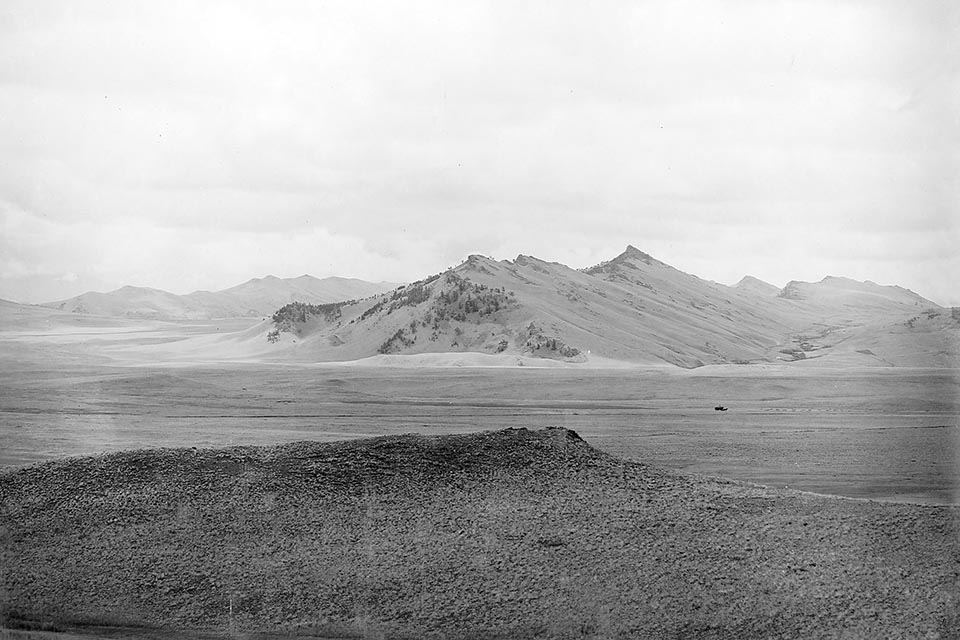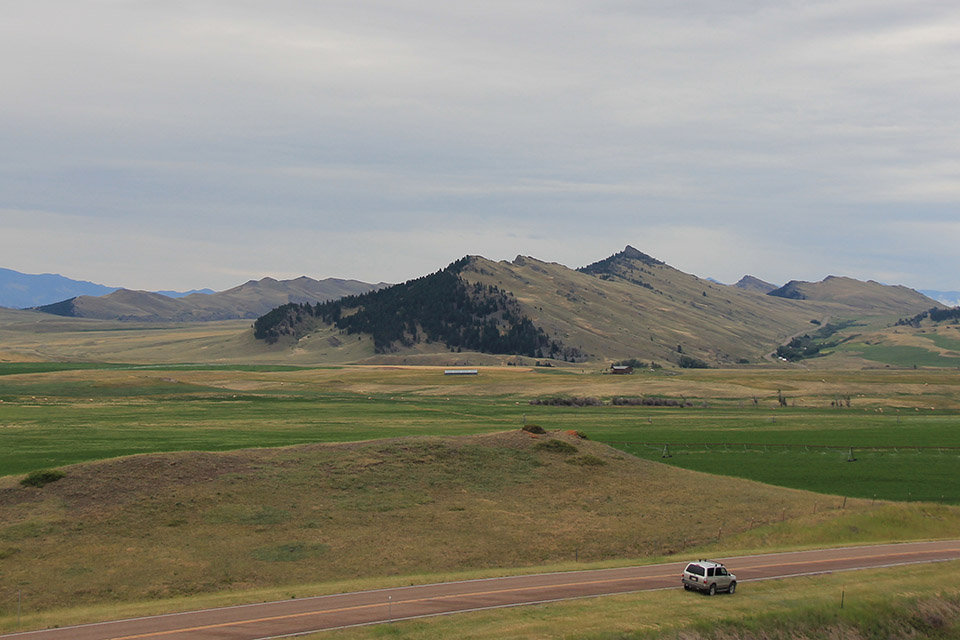A Giant Bison “Terrain Trap”?
For over 400 km (250 miles) north of Wolf Creek, Montana the western edge of the Great Plains and the Rocky Mountains foothills form a relatively continuous area where bison could move with relative ease and safety north or south between watersheds without being trapped rough terrain which would break up the safety provided by large herds, or be impassable during periods of deep snow cover. However, near Wolf Creek the Rockies suddenly sweep eastward to join with the Big Belt Mountains, forming a giant dish of rough terrain that juts over 100 km (60 miles) out into the Great Plains (see map below). Bison that moved into this terrain trap, possibly forced by prairie fires or blizzards, could be predictably located by Native American hunters and heavily hunted. South of this mountainous area near the current day location of Helena, it is likely bison historically had relatively low densities due to this interaction between rough terrain and intense predation. Surveys to compare historic wallow densities on undisturbed soils may help clarify this pattern of long-term bison density.

